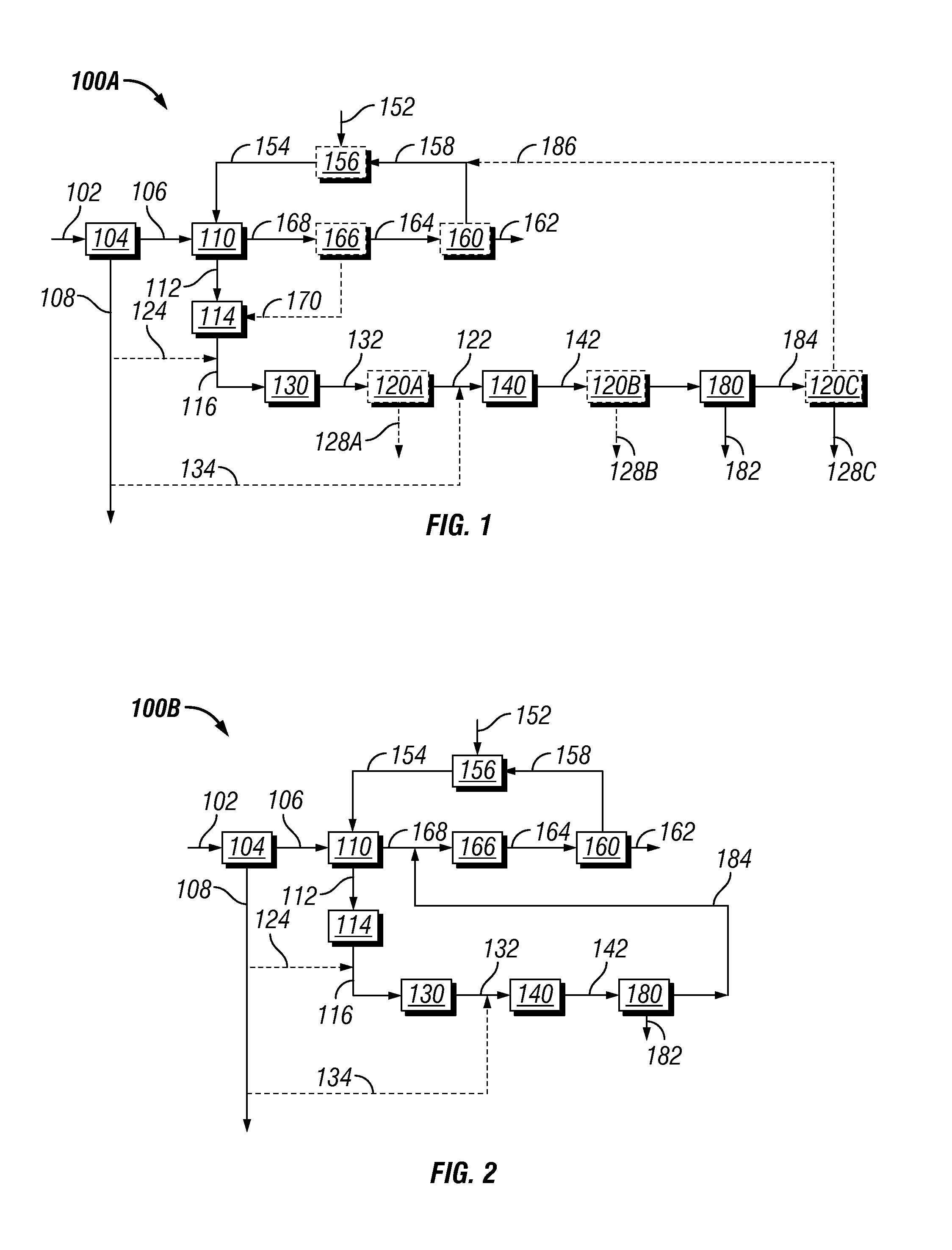Process for the production of alcohols from biomass
a cellulosic biomass and alcohol technology, applied in the field of cellulosic biomass alcohol production, can solve the problems of difficult chemical penetration of the biomass structure of lignocellulose with chemicals, ethanol from these feedstocks, and difficult production of ethanol from cellulos
- Summary
- Abstract
- Description
- Claims
- Application Information
AI Technical Summary
Benefits of technology
Problems solved by technology
Method used
Image
Examples
Embodiment Construction
[0028]It has now been found that by improving the digestion of biomass treatment and subsequent processing of such digested product, a process with high yield production of alcohol suitable for use in fuel can be obtained. The invention process has significant benefits over other biomass pretreatments wherein the toxic components such as furfural and acetic acid are essentially eliminated for the fermentation process. Also, bulk removal of lignin allows improved mass transfer of enzymes to cellulose for conversion to fermentable sugars.
[0029]In some embodiments, the systems for performing the presently disclosed methods can be configured by repurposing the components of a pulp mill that previously used the Kraft pulping process. Such repurposing can allow for the employment of the presently disclosed methods with relatively low capital investment compared to many other proposed biomass-to-ethanol methods. Further, the control objective in a typical Kraft pulping is to cook to a targ...
PUM
| Property | Measurement | Unit |
|---|---|---|
| temperature | aaaaa | aaaaa |
| temperature | aaaaa | aaaaa |
| temperature | aaaaa | aaaaa |
Abstract
Description
Claims
Application Information
 Login to View More
Login to View More - R&D
- Intellectual Property
- Life Sciences
- Materials
- Tech Scout
- Unparalleled Data Quality
- Higher Quality Content
- 60% Fewer Hallucinations
Browse by: Latest US Patents, China's latest patents, Technical Efficacy Thesaurus, Application Domain, Technology Topic, Popular Technical Reports.
© 2025 PatSnap. All rights reserved.Legal|Privacy policy|Modern Slavery Act Transparency Statement|Sitemap|About US| Contact US: help@patsnap.com


